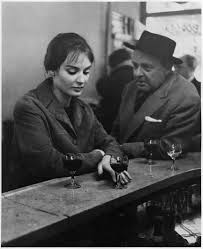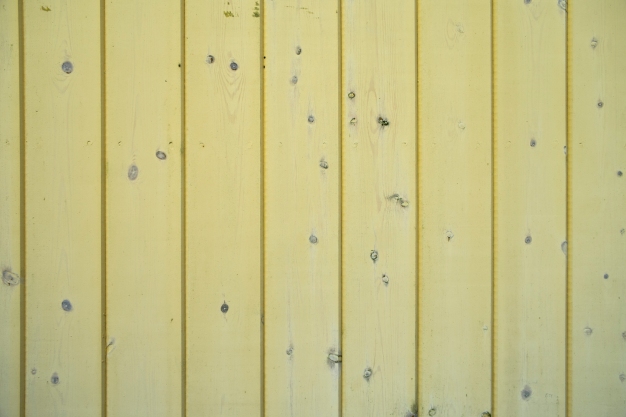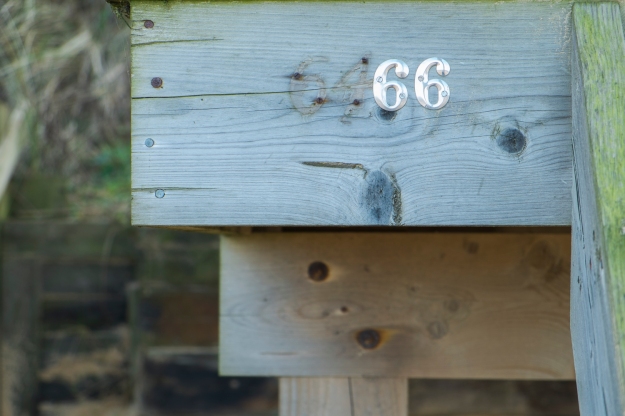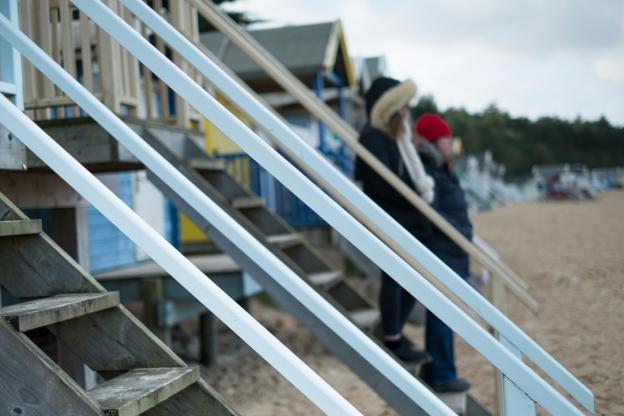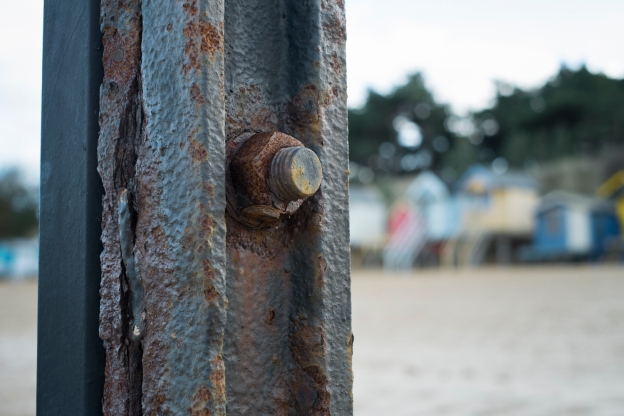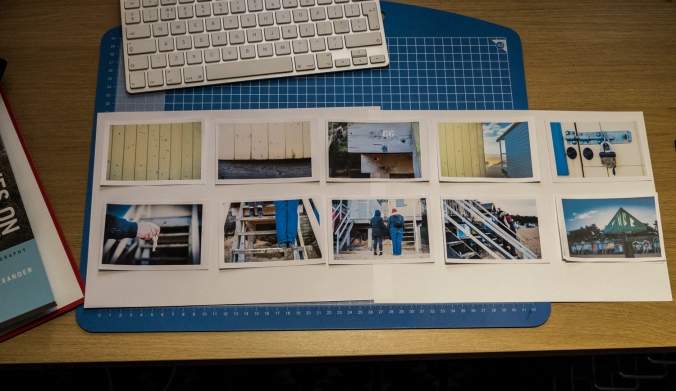Select an image by any photographer of your choice and take a photograph in response to it. You can respond in any way you like to the whole image or to just a part of it, but you must make explicit in your notes what it is that you’re responding to. Is it a stylistic device such as John Davies’ high viewpoint, or Chris Steele Perkins’ juxtapositions? Is it the location, or the subject? Is it an idea, such as the decisive moment?
Add the original photograph together with your response to your learning log. Which of the three types of information discussed by Barrett provides the context in this case? Take your time over writing your response because you’ll submit the relevant part of your learning log as part of Assignment Five.
I particularly enjoyed the planning and preparation for this exercise and used it to revisit and consolidate what I had read and written in response to Barrett’s essay on photography as information.
I was also mindful that although I had the freedom to choose any photographer and any of her or his images, I also needed to consider the range of the work undertaken in the course so far. The references in the brief to both Davies and Steele Perkins made a link to Exercise 4.5 in the previous section and I considered this in the selection of a photographer and one particular image.
Before I describe that in detail I also want to reflect on the concept at the heart of the exercise:
“take an image in response to it’
The ‘it’ being the image I have selected. Based on this I am assuming I have the licence to be relatively free in my interpretation of the task. I also spent a little time exploring the notion of ‘homage’.
As Bloomfield (2014) suggests:
‘…the homage should share some deep empathy or kinship with the original work’ (pp107)
The Oxford Concise Dictionary defines homage as:
‘Respect or reverence paid’
These two perspectives on homage framed how I set about the exercise.
During section 4 of the course I spent some time looking at the work of Bill Brandt. I had been aware of Brandt but in reality new very little about the man or the purpose of his work. As background reading for the course I borrowed a large volume of his images from a local library and spent some time getting to know his work in detail. my blog entry here records some of my thoughts about him. I also watched the 1983 BBC documentary : ‘Masters of Photography’ about Brandt’s life and work. In response to my first assignment: ‘Square Mile’, my tutor had commented that my work fell into a landscape/documentary’ genre. Reviewing the work of Brandt and recognising he worked in a number of genres, I think it is fair to say that he made a significant contribution to the landscape / documentary genre. His images from 1929 until just after the second world war document much about life in Britain through a landscape, survey type approach.
With strong black and white composition ( Brandt appears to have eschewed the use of colour), both the internal and original contexts of his work provide the viewer with an insight into life Britain between the wars. To me the social commentary of his work transcends the aesthetic beauty and other strength of his images. A side issue for further consideration at another time is my perhaps niaive hypothesis that Brandt appears to be less well known or appreciated by the wider public possibly because he was a German, all be it presenting himself as being of English origin. There is a whole line of cultural and social enquiry here for another time and probably a different course!
So, after what might read as a protracted introduction, it was Brandt to whom my homage would be directed!
There were many images I could have chosen but the one I settled on was: Grand Union Canal Paddington, taken around 1938, although the exact date is unknown.
It is a simultaneously simple, yet complex image. Visually it is well composed, there is a symmetry to the pictorial elements of the image and the viewer is led into the scene by the slow hyperbolic section to the curving pattern of the chimneys and rooftops and their reflected counterparts in the still water of the canal. The image has an abstract aesthetic as well as a clear subject and the near square portrait framing adds to the overall satisfying feel the photograph creates, for me anyway!
I did not set out to replicate or mimic this image, but I did set out to make direct reference to the internal context of Brandt’s image, that is the elements within the frame of the image. I also thought hard about the external context of both Brandt’s image and my own, however I was unable to resolve this in my own mind I await comment from my tutor when he looks at this exercise which is part of the Assignment 5 submission.

Grand Union Canal Paddington circa 1938-Copyright Brandt Estate
Brandt’s image of a canal and the backs of buildings carries some obvious internal content. This includes the composition, the deep depth of field and the relatively high contrast rendering of the image. The sky is bright and the reflections in the water are quite dark. We can see that these are perhaps dwellings and we know we are seeing the backs of them. The dark triangle in the left hand foreground I assume is a towpath and we can see that Brandt took the image from the opposite bank to the buildings.
The original context of this image is a little harder to read. Brandt’s cityscape work often presents a particular aesthetic and there are some common themes about viewpoint, tone and composition that are a feature of his work that are apparent in this photograph. There is a simple beauty and satisfying balance to the image.
By 1938 the canal would not have been used for commerce and there is a sense of calm, in part created by the strength of the reflections confirming the stillness of the water. This might have been part of Brandt’s motive. I know from wider reading about the Brandt that his survey work of British cities between the wars was an ongoing project. I am however making some assumptions here.
The External Context is easier to read. Brandt provided images for a range of publications such as Picture Post, Lilliput and Harpers Bazaar. My assumption is that whether this image appeared in any of those publications, Brandt’s work would have been within the context of this sort of potential presentational environment.
My image in response to Brandt’s: Grand Union Canal Paddington

Reflections on the Wensum
My image, of some new luxury flats built at the edge of the River Wensum is about place above all else, although it also has some information in the frame about subject. Like Brandt’s image it is in monochrome and there is a degree of symmetry created by the buildings and their reflections. The use of perspective I hope draws of the viewer into the scene but in my image the line of the roof tops is sharper and more angular. I did take an image from a different position with a wider angle lens that had a much more curving sense of perspective, however as discussed earlier, this is an homage and not an attempt to mimic the brandt image
I deliberately made the image in landscape format to be different to the Brandt photograph and I also managed the exposure to capture detail in the sky and water. easier to do in 2016, 88 years after the Brandt image was made!
The External Context of my image is much easier to read, it’s principle presentational environment is this blog and my OCA course work, The external context is that this work is a learning tool. However it easy to see from this image what Freund (1980) describes as ‘category displacement’ can occur just by adding some text to the image. For example, ‘site of the drowning’ presents a very different potential to interpret the image, a darker and altogether different take on the photograph, equally ‘Luxury flats for sale’ is a far more innocuous interpretation of the image. Both statements are true about the location where the image was made, neither are true within the the internal or original context of this work. The point illustrates that the artist can to some extent control these factors but in the digital age one might argue that the external context may be beyond the control of the artist?
Examples where the inspiration is obvious and not hidden
Broomfield(2014) pp108 suggests that students review their archive of images and add one or two to the blog where we have not tried to hide the influence. In doing so I found the images below.
The first, a landscape has been unashamedly made with the influence of Ansel Adams, I have tried to use black and white to create a strong high contrast landscape scene in the style of Adams and although a pale reflection o his work , it does I think have some elements of an Adams image, not least the epic natural scenery.

Hunting for Zone V
The caption, ‘Hunting for Zone V’ is a statement about the original context of this image. In making it I was far more focused on technique and the use of the Zone System than I was about the place or the content. I did compose the shot and consider the elements within the frame, but the real focus was on the range of mono tones in the photograph. It was made on film, like at the majority of my image making, so there was no ‘chimping’ or histogram checks to be had!
In an very different genre, the image below is a self portrait in a mirror, entirely influenced by the Rolleiflex self portraits of Vivian Maier. In recent years Maier’s work has been prevalent on the internet and with both the Maloof and Yentob documentaries about her life, her work has now become well known. Although known for her street photography, Maier’s catalogue of images is punctuated with a series of self portraits taken in mirrors and other reflective surfaces. My image is pure theft of this approach, right down to my use of a Rolleiflex 3.5E to make the photograph.
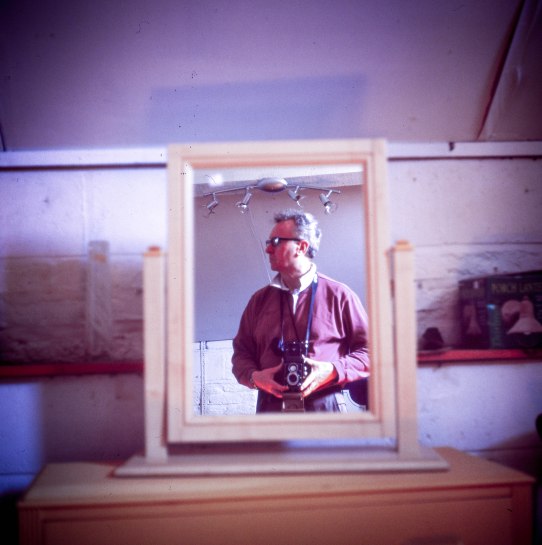
After Vivian
References
Barrett, T. (1986) Teaching about Photography: Photographs and Contexts, Art Education July 1986 Vol. 39, No. 4, pp33-36
Barrett, T. (1997) Photographs and Contexts in Goldblatt,D. & Brown, L (Eds) (1997) Op CitBurgin, V. (1982) Thinking Photography, Macmillan London
Bloomfield, R. (2014) Photography 1, Expressing Your Vision, Open College of the Arts, BarnsleyJay, W. (1999)
Brandt-The Photography of Bill Brandt, Thames and Hudson, London
Goldblatt,D. & Brown, L (Eds) (1997) Aesthetics: A reader in Philosophy of Arts, Prentice Hall, New York
Fruend, G. (1980) Photography and Society, David R. Godine, Boston, Mass.
BBC Documentary (1983) Master Photographers- Bill Brandt found at: https://www.youtube.com/watch?v=o3KuY0quBsk ( Accessed 26th November 2015)
Maloof, J. & Sisket, C. (2013) Finding Vivian Maier details found here ( Accessed 26th December 2015)
Victoria and Albert Museum Biographical Note- Bill Brandt found at: http://www.vam.ac.uk/content/articles/b/bill-brandt-biography ( Accessed 26th November 2015)
Yentob, A. 2013 Vivian Maier-Who Took nannies Pictures found at : http://www.bbc.co.uk/programmes/b0366jd5


